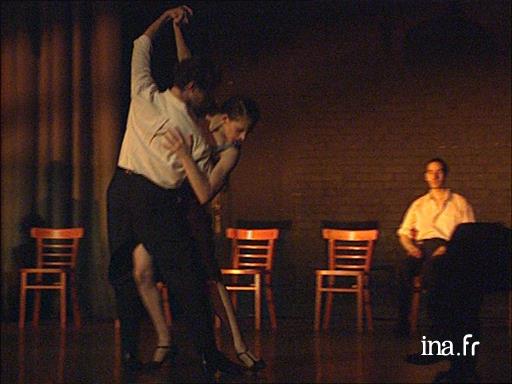The age of tango, tango classes, interview with fans of tango

Information
Tango has crossed borders and has gone beyond a fashion phenomenon. Portraits of enthusiasts, who during their classes in the dance hall, practice this dance to the sound of bandoneons. Guy Marchand talks about his love for these rhythms.
Context
In the mid-1970s: in the film Acrobat, dance teachers, Georges and Rosy confidently utter the words: "Argentine Tango is over, it's out; today, people dance English Tango, competitive Tango. And, at the time, it was very true: Argentine Tango was only danced in Paris by a few elderly couples to the sound of old-fashioned orchestras.
40 years later, the outlook is quite different: Argentine Tango has once again become a trendy dance, practiced by couples of all ages, especially young aficionados who inject their own physical seduction and artistic inventiveness. So what actually happened in the meantime? In the 1970s, a large number of Argentine artists, fleeing the military dictatorship, brought Tango rhythms to Europe, which were full of nostalgia for the popular culture of their homeland. Then, during the 1980s, Parisian audiences rediscovered the sensual power of the tango performance in shows from Argentina, like the mythical Tango Argentino. The most passionate spectators wanted to learn it and practice it for themselves, thus creating the conditions for a multi-faceted revival of Tango in Europe: lessons, schools, dances, festivals, workshops, and concerts. And, during the 1990s, the catastrophic economic situation in Argentina again caused a large number of young artists to leave the country, taking tango with them to the four corners of Europe and the world.
The report «Tango invades France» was filmed in 1997, at this very time when this tanguera wave was gaining pace and was starting to give rise to a structured community of aficionados, made up of an increasing number of societies and dance centres. Through its interviews, the report helps is us understand the psychological and human driving forces that have helped fuel this craze: the fascination with the sensuality of the abrazo, the joy of combining physical fun with the practicing of an artistic activity, the possibility to overcome one's inhibitions and meet people of the opposite sex, to rediscover one's sexual identity and one's identity in general in a society that tends towards uniformity.
It also shows us how the practice of this dance profoundly affects the lifestyle and world view of its aficionados, who travel throughout Europe, going from dance to dance, enriching and lightening up their lives through their encounters and experiences which would have been impossible without tango. Like this school canteen chef who still cannot get over the fact that, thanks to the dance, he managed to «seduce» an I.T. manager who later became his wife. Like this couple of senior citizens who in their older years give dance performances in their local restaurants. Or like this independent young woman who enjoys being led by a man during the tango. We also see a new form of network sociability allowing tangueros to find their own community, a community that is ready to welcome them warmly as the travel across the globe to perform their favourite dance.
Almost twenty years after its creation, this report, in addition to its value as a very moving historical testimony for its maker, who had just begun to dance the Tango at the time, also helps us to understand the reasons for this Latin dance craze, which has now gone beyond a mere fad to become a long-lasting social phenomenon.





